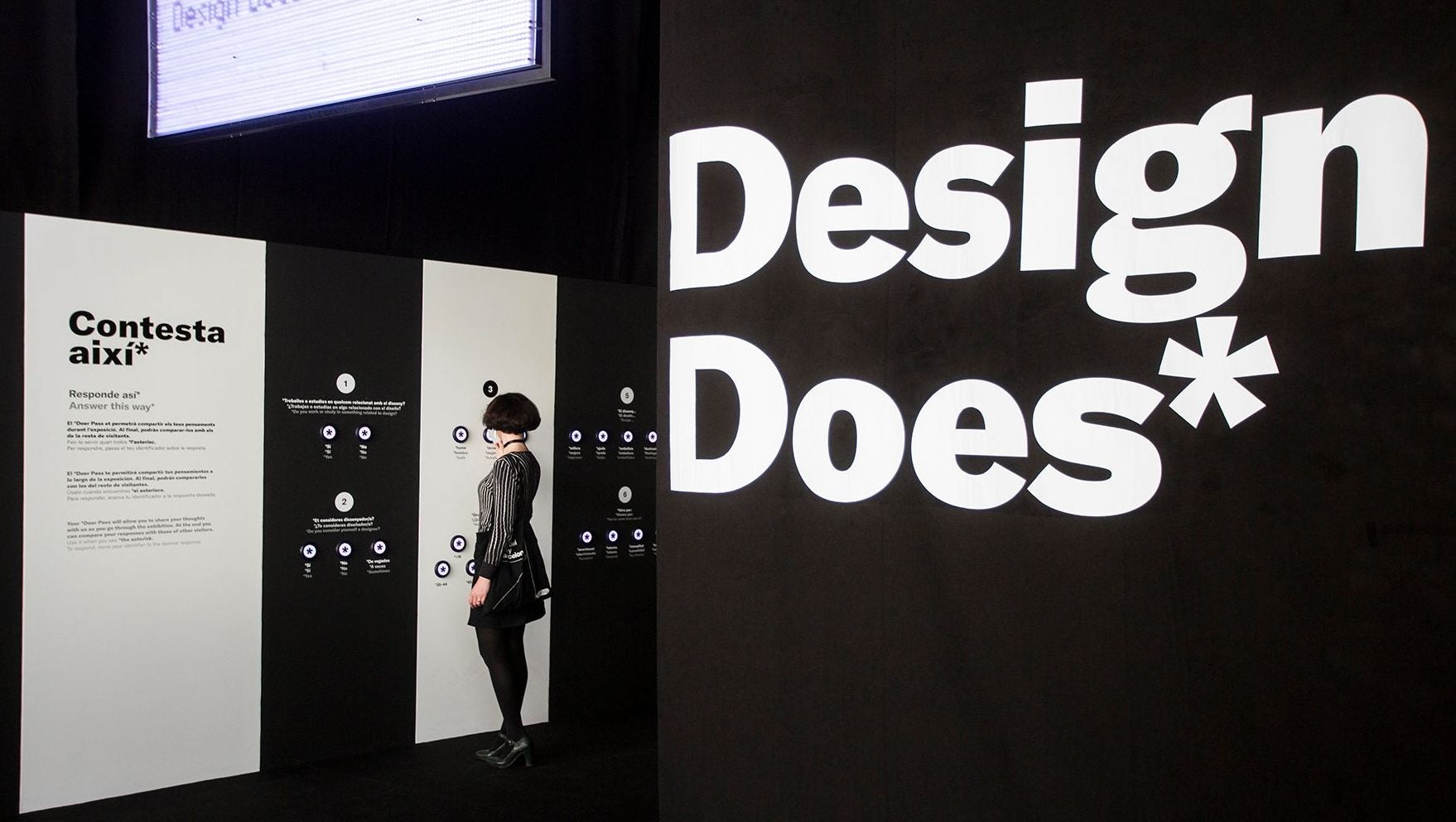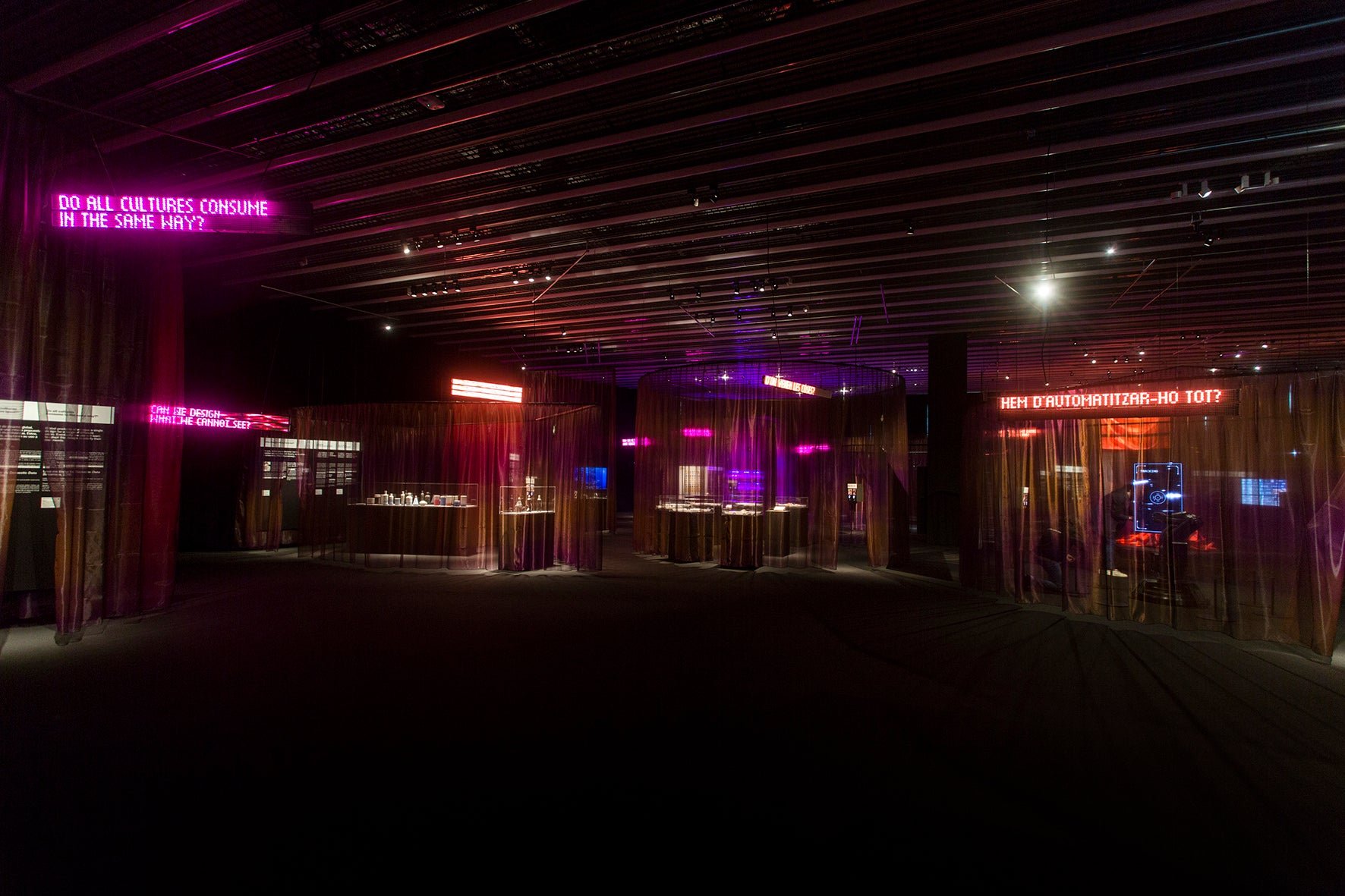A sobering exhibit celebrates design’s triumphs and exposes its dark side
We’re in an age when design is generally seen as a force for good. As the minds behind beautiful solutions for a range of problems, creative professionals are typically considered foot soldiers for progress. Terms like “good design,” “design for good,” or “social good design,” are so calcified in everyday parlance that it’s nearly impossible to think of creative types doing any harm. But as a sobering exhibit at the Barcelona Design Museum proves, design too can be used for oppression, with grave consequences for people and the planet.


We’re in an age when design is generally seen as a force for good. As the minds behind beautiful solutions for a range of problems, creative professionals are typically considered foot soldiers for progress. Terms like “good design,” “design for good,” or “social good design,” are so calcified in everyday parlance that it’s nearly impossible to think of creative types doing any harm. But as a sobering exhibit at the Barcelona Design Museum proves, design too can be used for oppression, with grave consequences for people and the planet.
“Design Does* For Better or Worse” explores design’s inherent duality through 15 politically-charged vignettes. In the same spirit as the Museum of Modern Art’s 2014 Design and Violence initiative, the exhibition explores the dark side of design as a counterpoint to its far more celebrated shining achievements.

The curators don’t pull any punches from moment one. At the exhibit’s entrance is an automatic gun similar to a model that once stood on the border of North and South Korea. Dubbed “robot sentry,” the Samsung-designed machine gun targets any moving object with heat and motion sensors. When robot sentry was unveiled to the public in 2014, Samsung Techwin spokesman Huh Kwang-hak described it an aid for tired soldiers. “Human soldiers can easily fall asleep or allow for the depreciation of their concentration over time, but these robots have automatic surveillance which doesn’t leave room for anything resembling human laziness,” he said to the Daily Mail.
Inspired by ELISAVA professor Ariel Guersenzvaig’s research into killer robots, co-curators Domestic Data Streamers found gun’s specifications online and 3D printed it for the exhibition. Visitors who come within its periphery experience how it feels to be targeted with marksman’s red dot tracking their movements.
Another unforgettable vignette called “Follow” dramatizes how much technology controls our lives. Interaction designer Daniel Armengol Altayó embodies unsuspecting users by allowing others to dictate his movements through a remote control. Sitting still on the floor strapped with VR goggles all day, visitors “activate” Altayó by picking-up a handheld device next to him. The experience of being in control of another human’s actions is at once disturbing and profound in a gallery setting, but it’s a routine tactic for UX designers trained in persuasive science with the goal of changing people’s attitudes or behaviors.

There are promising design projects too. Ooho!, an edible, algae-baed water container offers a solution to the alarming plastic pollution currently manifested in the Great Pacific garbage patch. There’s the Refugee Nation flag that gave displaced civilians a sense of identity at the Rio 2016 Olympic Games, while a luminous altar to acquaponics by the Barcelona-based start-up Ecosistema Aquapioneers offers possibilities for addressing global hunger.
Through the circuit of objects on display, visitors glean the supply chain of accountability and debate questions raised by each project. At every station is a voting panel where one can weigh in on a topic.

The notion that design can promote violence or oppression isn’t a popular idea. Design Does* co-curator Pau Garcia explains how the exhibition’s advertising riled up some local politicians. They were reacting to banners portraying how a simple clay brick can turn from a benign building block to a weapon during a riot—fearing that the image would incite mayhem. “Obviously we were not trying to empower people to get violent on the streets, that wasn’t our point,” he explains.
“But I was really happy because I thought we were starting to do what we wanted to do in this exhibition which is make people think.”
“This is what’s interesting about design,” Garcia reflects. “We cannot look at design in a very naive way.”